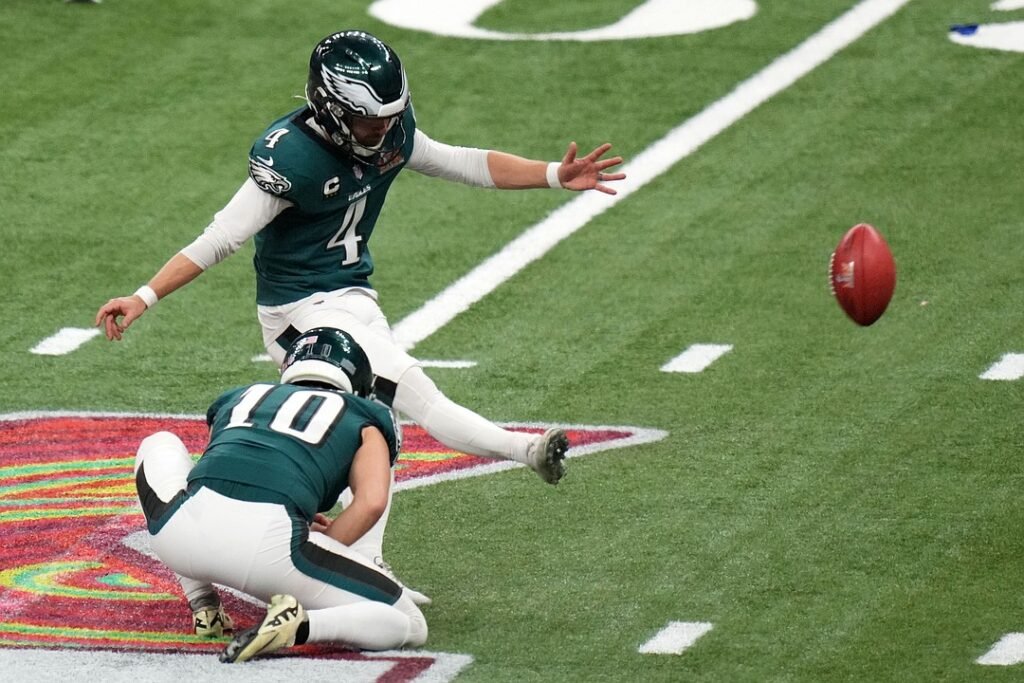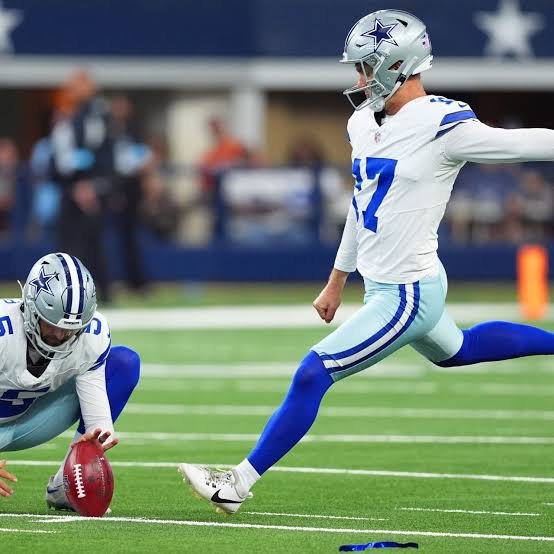By Carey Iona (The Flyin Hawaiian)
The game-winning field goal from 50+ yards is no longer an incredible anomaly; it’s a standard expectation. Today’s NFL kickers are operating at a level of precision and power that was unimaginable just a few decades ago, with league-wide accuracy consistently hovering above 80% and long-distance attempts becoming routine.
This season alone has underscored this fact with several legendary kicks. Chase McLaughlin of the Buccaneers drilled a 65-yard field goal, which is the longest outdoor field goal in NFL history (and tied for the second-longest overall). Brandon Aubrey of the Cowboys has also demonstrated incredible power, hitting a 64-yard game-tying field goal as time expired in regulation, proving that such attempts are now firmly in a kicker’s expected range. Even in the preseason, rookie Cam Little of the Jaguars pushed the distance envelope, hitting an unofficial 70-yard kick.
This transformation is not the result of a single factor, but rather a perfect storm of athletic, technical, and equipment advancements that have elevated the special teams specialist to the status of a highly refined athlete.
1. The Athlete: Specialization and Soccer Roots
The most fundamental shift has been in the identity of the kicker. The days of a position player doubling as a kicker are long gone. The modern NFL kicker is:
- A Specialized Athlete: Kickers begin intensive, year-round training, attending specialized camps from middle school through college. This early focus builds a deep foundation in proper technique and mental fortitude.
- A “Soccer-Style” Product: The near-universal adoption of the soccer-style (or swinging) kick, which replaced the old “straight-on” method, has been a game-changer. Almost all current NFL kickers have a background in competitive soccer, which provides a natural foundation for the explosive, rotational leg strength and ball-striking precision required for success.
- Physically Conditioned: Kickers now
follow dedicated strength and conditioning programs. Their training focuses on the functional, explosive movements of the hips and legs, optimizing power transfer and maximizing distance while maintaining accuracy

2. The Science: Biomechanics and Technique
Kicking has become a true science, with technology guiding every aspect of the kick:
- Biomechanics and Video Analysis: Coaches and athletes use high-speed video and advanced biomechanical analysis to study every frame of the kicking motion. This allows them to precisely fine-tune small details—like the angle of the plant foot, hip rotation, and follow-through—to eliminate wasted energy and maximize consistency.
- Precision Coaching: The increased value of the position has led to greater investment in dedicated special teams and kicking coaches. Young kickers now receive expert instruction that was simply not available to their predecessors, ensuring correct technique is ingrained early.
3. The Gear: The Technology of the Kick
Perhaps the most overlooked factor in the kicking revolution is the equipment itself, which is engineered for maximum performance:
- Specialized Kicking Footwear: The old square-toed kicking shoe has been entirely replaced by sleek, modern soccer cleats. These shoes are built with thin, form-fitting materials and a thin sole to provide a better, more sensitive connection between the foot and the ball.
- The Striking Surface: High-end cleats offer a large, clean striking surface, often with offset or laceless designs, ensuring the contact point with the ball is smooth and consistent, maximizing power transfer and flight path.
- The Plant Foot: Kickers often choose their cleats strategically. The kicking foot uses a lightweight shoe for maximum swing speed, while the plant foot requires a cleat with a stud pattern (often rounded/conical) that provides excellent traction while still allowing the foot to rotate slightly upon impact, reducing stress on the knee and ankle.
- The Conditioned Football (“K-Ball”): While the NFL mandates that all game balls be new, a change in league policy allows teams to “break in” a new ball specifically for the kicking unit. This process, which involves softening the leather, makes the ball easier to compress upon impact. This provides the kicker with a more consistent feel and a better grip on the ball for optimal trajectory and aerodynamics, which can directly translate into a few extra yards of distance and consistency.

4. Environmental and Unit Changes
External factors have also played a significant role in improving overall kicking statistics:
- Field Surfaces: The widespread use of modern synthetic turf (like FieldTurf) and highly-maintained grass fields provides a consistently firm and predictable surface for the plant foot, eliminating the instability of the muddy or choppy fields of previous eras.
- The Dedicated Unit: The kicker’s success is inseparable from the performance of the entire kicking unit. The long snapper and holder (often the punter) are full-time specialists who dedicate countless hours to perfecting their timing, ensuring a fast, accurate snap and a perfectly spotted hold on every single attempt.
In short, the modern NFL kicker is a hyper-specialized, highly-trained athlete operating with state-of-the-art equipment in an environment optimized for success. The expectation is no longer simply to make the easy kicks, but to consistently drill kicks from distances that were once considered Hail Mary attempts, profoundly changing the strategic landscape of the game.




